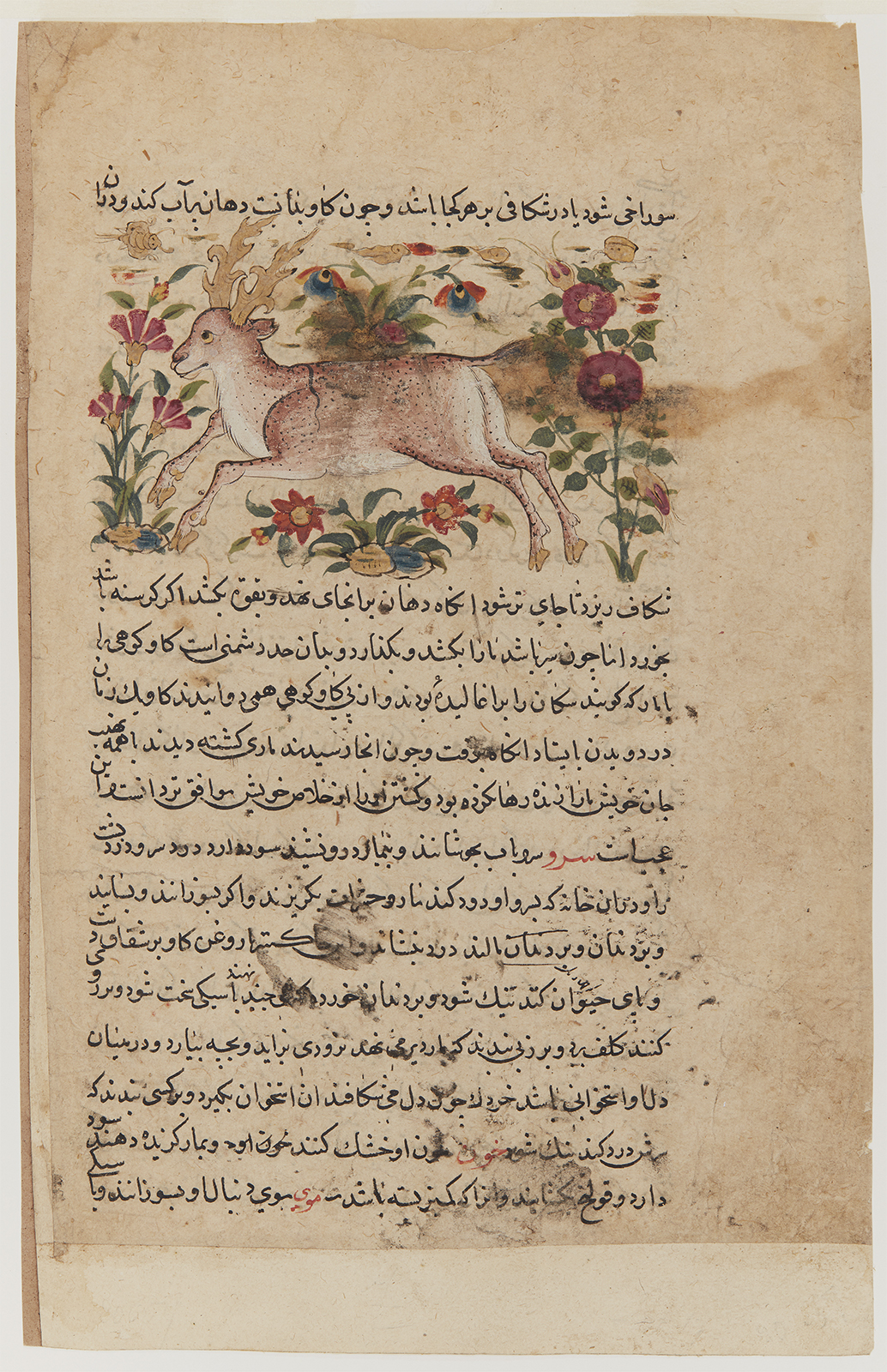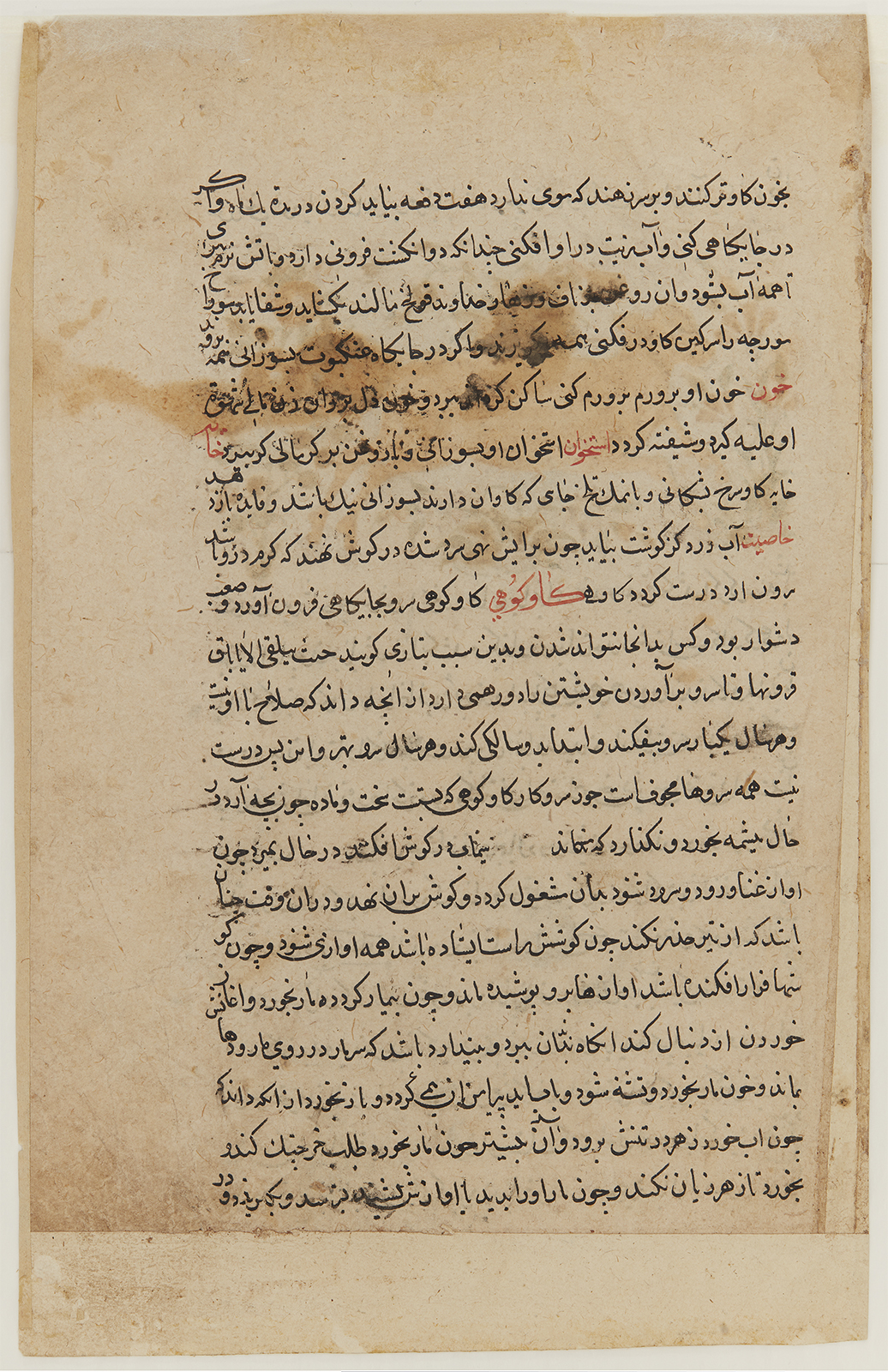Click on the image to zoom
Eland Antelope
Folio from a manuscript of Book of Pleasures for ‘Ala’(Nuzhatnama-yi ‘Ala’i) by Shahmardan b. Abi al-Khayr Razi
- Accession Number:AKM59
- Creator:Author: Shahmardan b. Abi al-Khayr Razi, Persian, active ca. 1072-1120
Created for: `Ala' al-Dawla Khass Beg - Place:Iran
- Dimensions:34.5 cm x 15.6 cm
- Date:ca. 1450
- Materials and Technique:opaque watercolour, gold and ink on paper
This illustration once belonged to a manuscript of Nuzhatnama-yi ‘Ala’i, an early 12th-century encyclopaedic text on the “the characteristics, uses, and natures of man and the animals: carnivores, wild animals, and beasts, birds, reptiles, and insects; trees, plants, stones, gems, and substances.”[1] Named for its dedicatee—‘Ala al-Dawlah Abu Kalijar Garshasp, a prince of the Kakuyid line of rulers of the Iranian city of Yazd—the Nuzhatnama is a major work of medieval Islamic naturalism.
Further Reading
The painting depicts the “mountain cow” or “mountain stag” (gav-i kuhi), an animal that may be identifiable as the eland antelope (Taurotragus oryx), a bovine native to the savannahs of Africa.[2] According to the text, the eland is the enemy of snakes, and the author relates a tale of an eland which, while fleeing a pack of dogs, stops to kill a snake despite the risk to his own life. The author writes: “This is wondrous!”
Following a convention for scientific and historical illustrated manuscripts in the medieval Islamic world, the pictures in this copy of the Nuzhatnama portray animal and vegetal subjects in a somewhat flat, stylized manner, from single-point perspective, and occupying a horizontal band across the width of the page.
— Michael Chagnon
Notes
[1] Quoted from the text’s introduction in Anna Contadini, “A Wonderful World: Folios from a Dispersed Manuscript of the ‘Nuzhat-Nama’,” Muqarnas 21 (2004), 96.
[2] M. Schwartz notes that the old Persian word gav (cow) came to refer in general to animals, and that gav-i kuhi can be glossed as “deer.” See M. Schwartz, “The Old Eastern Iranian World View According to the Avesta,” The Cambridge History of Iran, Volume 2: The Median and Achaemenian Periods, ed. I. Gershevitch (Cambridge: Cambridge University Press, 1985), 645–6.
References
Contadini, Anna. “A Wonderful World: Folios from a Dispersed Manuscript of the ‘Nuzhat-Nama’,” Muqarnas 21 (2004), 96. ISBN: 9781433705359
Schwartz, M. “The Old Eastern Iranian World View According to the Avesta,” The Cambridge History of Iran, Volume 2: The Median and Achaemenian Periods, ed. I. Gershevitch. Cambridge: Cambridge University Press, 1985, 645–6. ISBN: 9780511467738
Note: This online resource is reviewed and updated on an ongoing basis. We are committed to improving this information and will revise and update knowledge about this object as it becomes available.




